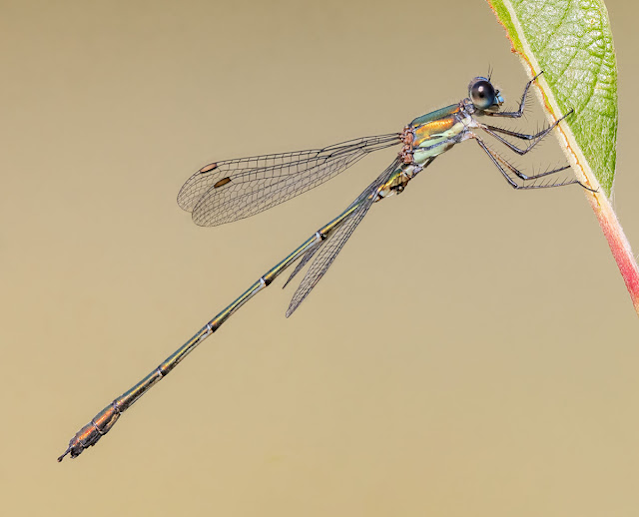With the new season nearly upon us, here are some of the 2023 highlights:
In 2023 there was fine weather in May and early June, which gave way to a generally disappointing July and August, with fine sunny days at a premium. At least there were no issues with sites drying out this year! For VC23 only, there were about 1230 records which is another all-time high.
The early season was notable for Common Clubtail sightings, with 39 records between 4 May and 15 June, including an unprecedented report of 27 adults and 11 exuviae along a short stretch of the Thames downstream from Clifton Hampden! There were also reports from well upstream at Rushey Lock, Tadpole Bridge and Chimney Meadows, where this species is only rarely encountered.
 |
| Common Clubtail © Wayne Bull |
Another early season speciality of national conservation concern, the Variable Damselfly, is hanging on in the county with just two records from the Barton Fields/Radley Lakes area.
 |
| Variable Damselfly © Ian Lewington |
Now that Wayne Bull is on the look-out in the north of the county, there were again good numbers (12+) of Downy Emerald seen at Rousham Lake, with smaller numbers seen at just 4 other sites.
 |
| Downy Emerald © Wayne Bull |
Unlike in 2022, regrettably there were no further sightings of Scarce Chasers along the River Thames north of Shillingford, or elsewhere, so this species remains very rare in the county.
Following their discovery in 2020, Scarce Blue-tailed Damselflies were again reported from stormwater ponds at Longford Park, Banbury and Didcot, but in smaller numbers than previously. These sites are becoming increasingly overgrown and may well soon become unsuitable for this species. However, with large numbers of stormwater ponds appearing all over the county there is a good chance of the species relocating to more suitable habitat. Whether or not they can be located is another matter!
 |
| Scarce Blue-tailed Damselfly [focus stacked] © Stephen Burch |
Emerald Damselfly is becoming an increasingly scarce species in the county with reports of small numbers from just nine sites scattered across the county.
One of the main highlights of the season was the highest number of Southern Migrant Hawker sightings since the discovery of the species in 2020. Last year there were only two records of mature adults but this year there were 20 reports both from Otmoor and, thanks to Gareth Casburn for his initial sighting, a nearby new site – Whitecross Green Wood. At this latter site, sightings were far more reliable than on Otmoor and a potential breeding pool was located with males holding territory.
 |
| Southern Migrant Hawker © Stephen Burch |
The Cothill BBOWT transect surveys for Southern Damselflies and Keeled Skimmer showed smaller daily counts than the record numbers seen last year, probably due to the poorer weather. It was of some concern that there no transect survey reports of Small Red Damselfly, with only 2 records from the adjacent Cothill Fen NNR.
Small Red-eyed Damselfly continued its recent range expansion but with reduced numbers probably due to the mixed weather. A late-season highlight was the continued spread of Willow Emerald Damselfly, although the rate of increase appears to have slowed following its dramatic expansion last year.
 |
| Willow Emerald Damselfly [focus stacked] © Stephen Burch |
The last records were of Common Darters near Wantage and Lockinge on 23 November.
Over the year, 29 species were recorded.
Stephen Burch, Oxfordshire Dragonfly Recorder

No comments:
Post a Comment